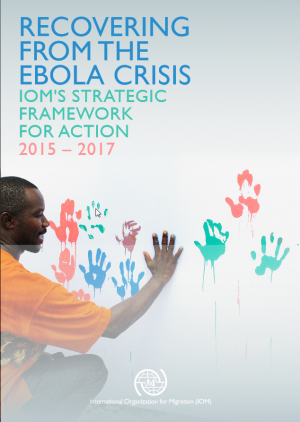Description
The 2014/2015 Ebola Virus Disease (EVD) outbreak in Guinea, Liberia and Sierra Leone, which also affected neighbouring countries, Nigeria, Senegal, and Mali, has been unprecedented in its scale and impact, in terms of human loss, economic drain, and delayed development for countries within the region. The EVD outbreak of 2014/2015 in West Africa was declared a Global Health Emergency on 8 August 2014 and was in fact two crises in one: 1) A crisis of a virulent, epidemic disease with more than 28,600 infected persons and over 11,300 deaths, including 513 deaths of health care workers (WHO Situation Report data, as of 13 December 2015); and 2) A crisis of systems that were unable to address the challenges of EVD in health services and public health, consequentially crippling other governmental systems, including education, food security, finance, and more.
Content:
1. Background
1.1. The Ebola Crisis in West Africa: Current Perspectives
1.1.1. Human Mobility and the EVD Crisis
1.1.2. The Global Health Security Agenda
1.2. IOM Instruments to Emergency Response
2. IOM’s EVD Response through the Migration Crisis Operational Framework (MCOF)
2.1. Strength of IOM in Ebola Response and Transition Towards Recovery
3. IOM’s Programmatic Areas for Ebola Recovery
3.1. Enabling Community Resilience and Restoring Essential Services
3.1.1. Restoring the Functionality of Key Government Systems
3.1.2. Activities to support Social Cohesion, Resilience Building, and Disaster Risk Reduction
3.1.3. Counter-Trafficking and Protection of Vulnerable Migrants
3.1.4. Technical Assistance for Humanitarian Border Management (HBM)
3.1.5. Leveraging Diaspora Engagement to support Post-Ebola Reconstruction Efforts
3.1.6. Facilitating Labour Mobility for Enhanced Resilience
3.2. Health, Border and Mobility Management (HBMM)
3.2.1. The Mobility Continuum: Stages of Mobility and Spaces of Vulnerability
3.2.2. The Four Pillars of the HBMM Framework
3.2.3. Unpacking the 10 Components of the HBMM Framework
3.3. Cross-Cutting Pillar: Training and Capacity Building
Region/Country (by coverage)
Publisher
IOM
